 Leading Blog | Posts by Month |
 Leading Blog | Posts by Month |
04.29.06

Best Brand Development Documentary We ran across what must be the most creative discussion of developing your brand. It's titled "Your Blossoming Brand." 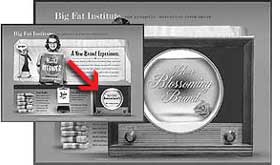 It's by the people at Big Fat Brain. Their web site has been nominated for a Webby and we think it deserves it. After viewing the introduction (45sec), click on the television in the lower right-hand corner promoting "Public Service Announcements." Then sit back and enjoy a thoroughly unique education in brand development. (1min 45sec) It's by the people at Big Fat Brain. Their web site has been nominated for a Webby and we think it deserves it. After viewing the introduction (45sec), click on the television in the lower right-hand corner promoting "Public Service Announcements." Then sit back and enjoy a thoroughly unique education in brand development. (1min 45sec)
Posted by Michael McKinney at 08:38 AM
04.28.06

You Have a Business and People Don’t Get It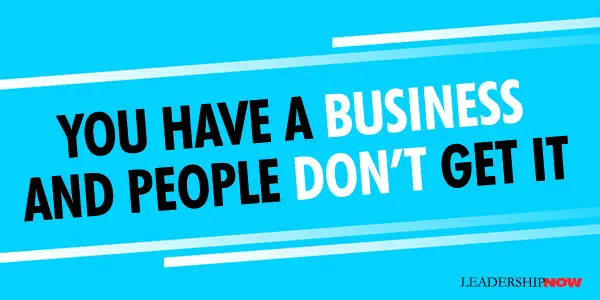
IN a survey conducted by Dan Topf of Management Development International, respondents—a mix of line employees and executives—were asked ten simple questions, such as “What percentage of each dollar the company takes in as sales does it keep as profit?” and “Would customers pay for what you accomplished last week?” The point was to not only get at what the respondents understood about business, but also what they understood about how they contributed to that business. Training contributing editor Holly Dolezalek reported on the results: The results were mixed, and Topf says that’s exactly the point. All kinds of employees, both higher- and lower-level employees, had answers all over the map for these questions. Some had wildly inaccurate ideas about how much of a company’s sales turn into profits. Others knew what their company’s profit margin was, but had no idea how it was reached; and many said that they believed their company’s strategy would be successful, but that they had no impact on that strategy or on the company’s cash flow. How are we doing at communicating what it is we do and how we determine how well we are doing it? The macro view. When people know where they fit in and what their unique contribution is, they can then move beyond mere employees and become leaders. They can lead from wherever they are in the organization and that will contribute to the bottom line.
Posted by Michael McKinney at 01:16 AM
04.26.06

Evidence-Based Management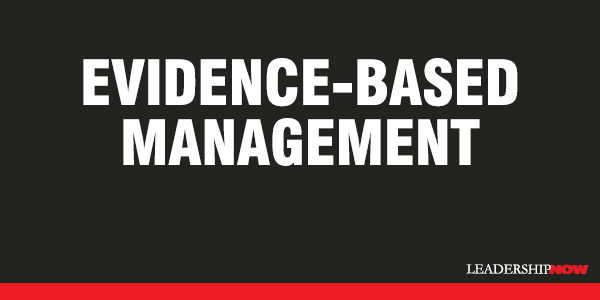
OBSERVING that if doctors practiced medicine the way many companies practice management, there would be far more sick and dead patients, and many more doctors would be in jail, professors Jeffrey Pfeffer and Robert Sutton Evidence-based management is really a way of thinking and looking at the world. The mindset rests on two disciplines: "first, willingness to put aside belief and conventional wisdom—the dangerous half-truths that many embrace—and instead hear and act on the facts; second, an unrelenting commitment to gather the facts and information necessary to make more informed and intelligent decisions, and to keep pace with new evidence and use the new facts to update practices." Some specific half-truths discussed in the book: The best organizations have the best people; financial incentives drive company performance; change or die; great leaders are in control of their companies. Instead of following half-truths, Pfeffer and Sutton endorse principles such as: Treat your organization as an unfinished prototype; see yourself and your organization as outsiders do; power, prestige, and performance make you stubborn, stupid, and resistant to valid evidence; evidence-based management is not just for senior executives; and ask the best diagnostic question: What happens when people fail? 
Posted by Michael McKinney at 12:05 AM
04.24.06

What Would You Do?
With Leslie Robertson, the engineer of the World Trade Center, the team devised a plan to methodically reinforce all the bracing joints a floor at a time. The repairs would take the better part of three months, with work happening around the clock. Beirut's closing remarks have application to anyone both personally and professionally: We designers call ourselves problem solvers, but we tend to be picky about what problems we choose to solve. The hardest ones are the ones of our own making. They're seldom a matter of life or death, and for maybe for that reason, they're easier to evade, ignore, or leave to someone else. I face them all the time, and it's a testimony to one engineer's heroism that when I do, I often ask myself one question. It's one I recommend to everyone: what would William LeMessurier do?[The Citicorp Center in New York City is most famous for its 45 degree roof and its ten-story stilts. Standing at 914 ft (279 m) and 59 stories high, it was designed by Hugh Stubbins and built in 1977. Its unusual base was designed to incorporate the nearby St. Peter's Church.]
Posted by Michael McKinney at 09:02 AM
04.21.06

Napoleon’s Six Winning Principles
NAPOLEON still manages to get a lot of press. In his book Napoleon on Project Management, Jerry Manus effectively develops practical lessons from the career of the French leader. At the core of his analysis are Napoleon’s Six Winning Principles. These principles are meant to serve as a compass and not as hard and fast rules. However, Manus notes that “these principles work together and feed off one another like interlocking gears. A lack of any one of them will impede success." A chapter is devoted to each point, but here’s a quick summary:
Manus writes that Napoleon’s downfall was that his success eventually led to his undoing. The principles that had brought him success began to unravel. He offers four critical warning signs that we need to watch for: power (self-righteousness), overzealousness (obsession), scarcity of effective leaders (disorder and mistrust), and an unbalanced lifestyle (leading to burn out and loss composure and health). The bottom line: …if we adopt a compliance mentality as a result of our power, isolate ourselves from our leaders and subject-matter experts, and forget to involve our stakeholders in major decisions, we will turn around one day and there will be nobody behind us. And with nobody behind us, we can no longer call ourselves leaders. 
Posted by Michael McKinney at 09:12 AM
04.20.06

Innovation From the Inside Out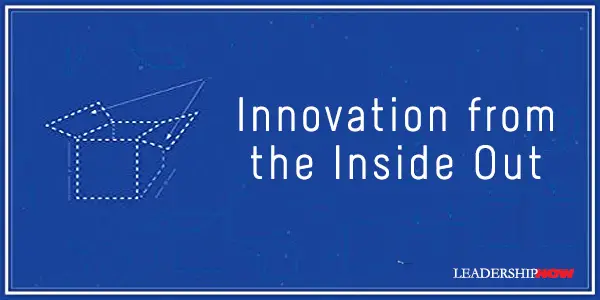
DOUGLAS RUSHKOFF'S book, Get Back in the Box is worth going back to take a look at. He sees our current creative dearth as the beginning of a new innovative age. The tough part is proving to ourselves that genuine creativity is a result not of out-of-the-box thinking, but of true expertise. Experience counts. The chief barrier tends to have less to do with any external obstacle or competition than with our own reluctance to engage in our own enterprises. In other words, we need to get back to what got us fired-up in the first place. Understand what we are doing from the inside out. Innovation and meaning come from what we are passionate about. It's intrinsic. We need to take on a playful approach. Yet play is hard work. So instead we try to cover up and distract ourselves and our employees from the issues and delay the inevitable. Consider this observation from the book:
"Employers are busy installing foosball tables, hiring chefs, and building gyms for their increasingly disgruntled employees, but these are just ways of trying to make a bad situation more tolerable. A foosball table is not the sign of a fun place to work; it's a glaring symbol indicating that work is not fun and employees need a break. Why would they rather be playing foosball than doing whatever it is they have been hired to do." Some food for thought. 
Posted by Michael McKinney at 09:07 AM
04.18.06

Remains of the Day: Leadership in a Crisis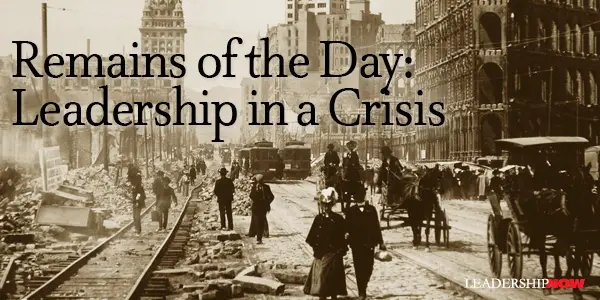
ONE-HUNDRED YEARS AGO today San Francisco was struck with what is estimated today to be a 7.7 to 7.9 earthquake. The first shock hit at 5:18 A.M. Perhaps more devastating than the quake were the fires that broke out almost immediately. With the main water lines broken, firefighters were virtually helpless. By April 21 when the last fires died out, the earthquake and the events that followed destroyed 2,831 acres of the city, more than 490 blocks. It consumed 30 schools, 80 churches, and 250,000 homes. It killed at least 3,000 people.  Catastrophes or a major crisis of any kind are a breeding ground for bad decisions due to the swiftness with which they must be made. Time becomes the enemy and buying time to think becomes a luxury. Just hours after the earthquake, and acting on what turned out to be more rumor than fact, San Francisco’s mayor Eugene Schmitz posted a proclamation declaring that local police and troops were to "shoot to kill" any looters. A decision that is unconscionable and certainly illegal. Needless to say, widespread looting never materialized. Then as now, catastrophes also bring out the gainsayers. While constructive criticism and reflection is mandatory to bring about improvements in handling such disasters, the obsessive babblings of the uniformed only distract from and impede this process. The problem of self-restraint is always with us as it is part of the human condition. Civility and maturity don't seem to be as highly valued today as are unfettered access to media and the right to speak one's opinion even if that opinion is lacking in thought and wisdom. Unlike 100 years ago, today we can be inundated with bits of information totally removed from its context before the leaders involved can even make sense of it and move constructively in a direction that benefits the greatest good. Leaders will make mistakes. A leader collecting their thoughts and not dashing out the door is prudent and not a sign of weakness. That's the job of a leader: to keep their head when all about them others are losing theirs. Leaders who take advantage of a crisis for their own gain need to be dealt with to be sure, but not for the personal gain of those individuals given the solemn task of reviewing that leaders behavior in the aftermath.
Posted by Michael McKinney at 12:16 AM

LeadershipNow Communiqué April NewsletterWe e-mailed our April newsletter today. If you didn't get it and would like to, you can sign up for it here.
Posted by Michael McKinney at 12:05 AM
04.17.06

Executive Compensation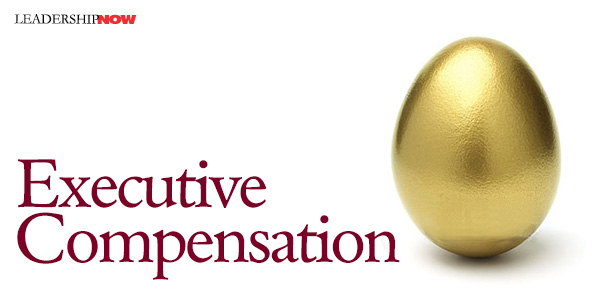
PROMPTED by a piece in the New York Times reporting that Ivan Seidenberg, CEO of Verizon, collected $19.6 million in compensation last year, Tom Peters commented on executive compensation. Here’s an excerpt: In general, there's been a firestorm surrounding executive pay this year. I've generally avoided the topic. I believe in markets—including markets for exec pay. On the other hand, when something looks downright silly ... it may well be downright silly. Seidenberg is but one of many examples of this magnitude of apparent disjunction between pay and performance. Tom is right on. In general, we give CEO’s too much credit for successes and too much blame for failures. This impairs the performance of both the top management team and the organization as a whole. Robert Sutton, professor of management at Stanford, recently said in an interview that new research is coming out that suggests that the bigger the difference in pay between the CEO and next top three people of that management team, the worse that firm performs. The problem isn’t that they get more. They should. The problem is that is disproportionately more. But, how should that compensation be determined? Perhaps compensation should be linked to defined earnings performance goals? Should a highly qualified CEO get what the market is willing to pay? Should a wise CEO place a self-imposed cap on their compensation for the good of the organization and the market in general?
Posted by Michael McKinney at 09:18 AM
04.14.06

5 Tips to Boost Your Power
THE April/May issue of Worthwhile Magazine features a section on how people are redefining power in our organizations and in our culture. Claiming that power today has much more to do with power over yourself than others—I don't believe that this is a new phenomenon, but nevertheless—they bring us five tips to boost our power: 1. Be true to yourself, even (especially) if you're a little weird. High School is the last time conformity and power share a seat at the same table. Power comes from knowing what sets you apart from the crowd—and why the rest of the world should care. Which brings us to... 2. Know how to express yourself. If you want your ideas heard, you have to know how to command the right kind of attention. Witty (Jon Stewart) is powerful; constant quipping (name any sitcom actor) isn't. Don't qualify your opinions ("I may be the only person who thinks this, but..."). And never, ever ramble. Indeed... 3. Less is usually more. Great cooks and entertainers know to leave audiences wanting more. They aren't the only ones. Abraham Lincoln got it right. One of the most powerful speeches in history—the Gettysburg Address—was less than 300 words and lasted only two minutes. 4. Except when it isn't. Sometimes over-the-top works. This goes back to the know-thyself thing. Some people really are larger than life. Everything they do, say, wear, write or think is in bold letters. But there is nothing more exhausting than a larger-than-life wannabe. 5. Force isn't power. Unless you're a drill sergeant, a prison warden (or a parent), it's pretty hard to force anyone to do your bidding. Instead, people yearn to connect with purpose and passion or something bigger than themselves. Think inspiration. It's the new power.
Posted by Michael McKinney at 08:39 AM
04.11.06

“If it ain't broke...” Thinking Leads Nowhere
ROSABETH MOSS KANTER (Evolve!/2001) likens the constant change happening today to the croquet game in Alice in Wonderland, a game in which “nothing remains stable for very long, because everything is alive and changing.” Robert Kriegel adds, “Not only is everything changing, but everything exists in relationship to something else that is changing." He suggests, "If you or your products don't grow, improve and evolve, as in nature—they (and you) will face extinction.” Faced with this understanding, we quite often either freeze and do nothing or get into a frenzy and begin to change everything. Certainly, change must become a part of our orientation. It’s difficult to be a leader today without that orientation. However, the changes must be calculated changes and not a reaction to perceived pressures or change based on the shallow "new-is-better" mindset. As part of our ongoing maintenance (and it should be ongoing)—personally and organizationally—we must take a look at what should not be changed (and some things shouldn't) and what might be or could be changed. Core values don't change, but methods (approaches) often do. If these things are not considered in advance, the tendency will be to make rash and impulsive moves from one ditch to the other when the pressure to change begins to loom over us.
Posted by Michael McKinney at 10:12 AM
04.07.06

Three Levels of Thinking: Moving Toward Maturity
IN The Power of Purpose, Peter Temes defines three levels of thinking: Level One: The most important question for understanding the world and taking action is How do I feel? Or How do I look to myself? Who am I? Level Two: You progress to How do others feel about me? Or How do I look to others? Who do others think I am? Level Three: At this level, the central question is not about how I feel, or how others feel about me, but about how they feel about themselves. The basis of this level is not about what matters to me, but what matters to others. How can I help others? He suggests, “Develop the habit of asking level-three questions. Look hard at he clues other people give you about their personal goals and the ways they see themselves. Look for opportunities to help others feel stronger and more successful and you’ll see that you will gain as much as or more than others do. When you get past the zero-sum-game model of how the world works—the idea that for me to win someone else must lose—you begin to see the enormous power that comes from sharing your strength with others. That insight, and the moral strength that comes from helping others, are the greatest gifts you can give yourself, and they mark the clearest path to success.”

Posted by Michael McKinney at 09:12 AM
04.05.06

Stuffing the Dog
ACTOR ALAN ALDA wrote about a dog he had when he was eight years old. In his book, Never Have Your Dog Stuffed, he describes how he was so upset about burying his dog that his Dad suggested that they have it stuffed. In a Newsweek interview, he said: It turned out to be a really terrible idea because the dog came back from the taxidermist with a hideous expression on its face that frightened everybody. After a while, I started to think of that as an image of something that went a lot deeper than the dead dog, which is you can’t bring back anything to life. Alda continued that there are a lot of ways we stuff the dog, trying to avoid change or hanging on to a moment that's passed. We all of course, like to hang on to the familiar. What things are you hanging on to that once abandoned would allow you to move to the next level? Joseph Schumpeter (1942) coined the phrase “creative destruction” to describe the process by which people and organizations determine what they should stop doing. So much of building a good life or organization is a process of elimination. A process where we replace the outdated with the new more productive behaviors or products. Start by creating a not-to-do list. Have you stuffed the dog lately?
Posted by Michael McKinney at 09:56 AM
04.04.06

What Makes a Business Classic?ACCORDING to the Financial Times it is the business book that provides the most compelling and enjoyable insight into modern business issues, Simon London, the Financial Times management editor, lists his five great business books: • My Years With General Motors by Alfred Sloan, 1963
Posted by Michael McKinney at 03:27 PM
04.03.06

Servant Leadership
IN Peter Temes' remarkable book, The Power of Purpose, he gets to a fundamental point of servant leadership right from the get-go. He writes: Imagine the man or woman who looks at the world and understands, this is when I should push, here is the opportunity to reshape the world in some small way, and knows too when to say, here is when I must step back, here is when my desire has to yield to patience. The real power lies in being able to see both visions. He’s writing about the balance between ambition on one hand and humility and patience on the other. Being able to read a situation is fundamental to this balance and it comes from having both self-knowledge and a quality best described as mindfulness. This is the essence of servant leadership; an outward focus. (By the way, if you are interested in looking into the topic of mindfulness, Mindfulness by Harvard professor Ellen J. Langer is well worth your time.) 
Posted by Michael McKinney at 09:30 AM
|
BUILD YOUR KNOWLEDGE


How to Do Your Start-Up Right STRAIGHT TALK FOR START-UPS 
Grow Your Leadership Skills NEW AND UPCOMING LEADERSHIP BOOKS 
Leadership Minute BITE-SIZE CONCEPTS YOU CAN CHEW ON 
Classic Leadership Books BOOKS TO READ BEFORE YOU LEAD |
|